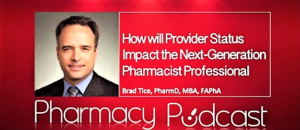- Diabetes innovations enable self-care, patient engagement (drugstorenews.com)
Diabetes care is providing a gateway for better interaction between pharmacists and patients...people with diabetes visit the retail pharmacy not only to have their prescriptions filled, but also to learn more about blood sugar levels, A1C testing and self-care... Pharmacists also have to face the challenges of keeping costs down, not just for the retailer, but for the patients as well...Manufacturers said many of the latest innovations can help. The product launches help make blood glucose testing easier, more comfortable and more affordable. As a result, patients can be encouraged to improve their self-care, and also reduce certain costs... Greater involvement in the patient’s health care can improve patient results and hopefully, in the process, buy greater loyalty to the pharmacy that they happen to be working with...There are more than a few pharmacy chains that hire pharmacists not to fill prescriptions, but to work on phones, do medication management, and, when they see an issue, they can call the patient or call the healthcare provider...READ MORE
- Needle innovations
- Beyond testing and injecting
- The future
- How Mergers Will Affect Pharmacists (drugtopics.com)
The Cigna-Express Scripts merger has gotten a go-ahead from the Department of Justice, but DOJ has not ruled on the CVS-Aetna merger at press time...Both deals have shareholder backing... I think it’s part of an overall trend...Effects on Pharmacists...Frederick S. Mayer...CEO of Pharmacists Planning Services Inc...fears that they could result in loss of pharmacy jobs due to closures of independent pharmacies that can no longer compete. Chain pharmacists could also have less job security as locations may close. Mayer also says consolidation could lead to higher prices, lower quality, and less choice for consumers...Pharmacists...trained eight years for their PharmD, and now they are counting, pouring, and typing due to mergers,” says Mayer, who adds that pharmacists in larger settings don’t have adequate time for patient counseling...Over the past 10 years, mergers have resulted in poorer choices of medication for consumers and patients...Chains that are in one of these vertically integrated systems have guaranteed volume without competition on price...Perry Cohen, CEO of The Pharmacy Group...Companies responding to the need for new care models for healthcare services. The marketplace needs new care models and wants to embrace these companies that get ahead of the curve...More Mergers Coming... more vertical mergers and acquisitions...The horizontal is being driven a lot by the reimbursement pressure...The vertical is much more strategic around the control of the overall person’s healthcare...
- Few California pharmacists prescribing birth control (reuters.com)
A California law allowing pharmacists to prescribe birth control sought to make it easier for women to obtain contraception, but few drug stores provide the service... Only 11 percent of retailers in the state offered pharmacist-prescribed contraception one year after the law went into effect, the research shows...Our findings strongly suggest that more pharmacies need to offer this service to live up to the promise of widespread, easier access to birth control...Four states - California, Oregon, Colorado and New Mexico - allow pharmacists to prescribe contraceptive pills, patches, rings and injections after training about how to assess health risks and counsel women on contraceptive choices... Most stores that offered the service charged a fee...Under the Affordable Care Act, insurance carriers must pay for family planning consultations with healthcare providers. But the law does not cover pharmacists...Oregon requires Medicaid to pay pharmacists for the service. California’s law has a similar provision, but it doesn’t take effect until 2021...
- King Review leaves hospital pharmacists out in the cold (ajp.com.au)Review of Pharmacy Remuneration and Regulation – Interim Report – June 2017 (health.gov.au)Response to the Review of Pharmacy Remuneration and Regulation – Interim Report (shpa.org.au)
The King Review has failed to acknowledge the role of hospital pharmacists, says the SHPA...The interim report of the Review of Pharmacy Remuneration and Regulation’s failure to acknowledge or leverage the “pivotal” role of hospital pharmacists in ensuring Australians have appropriate and convenient access to medicines, the Society of Hospital Pharmacists of Australia says...In its formal response to the interim report, SHPA highlighted managing transitions of care between hospitals and the community and prioritising the development of HMRs (Home Medicine Reviews) as key aspects of the King Review...It also reaffirmed what it sees as the “crucial” value of including SHPA in Agreement negotiations and decisions...SHPA Chief Executive Kristin Michaels says SHPA’s response to the King Review was driven by the position of hospital pharmacists as progressive advocates for clinical excellence and committed to evidence-based practice...Ms Michaels says hospital pharmacists are equipped to influence a reduction in the 230,000 medicine-related hospital admissions per year in Australia, which cost the health budget $1.2bn annually...
- Nevada State Board of Pharmacy News (bop.nv.gov)
Board Members
Leo Basch, PharmD, RPh, Las Vegas
Robert Sullivan, Reno
Jason Penrod, PharmD, RPh, Reno
Kevin Desmond, RPh, Reno
Wayne Mitchell, PharmD, RPh, Carson City
Melissa Shake, PharmD, RPh, Las Vegas
Jade Jacobo, PharmD, JD, RPh, Las Vegas
Retirement of the Executive Secretary
- Larry L. Pinson, PharmD, RPhNew Reno Office -
985 Damonte Ranch Parkway, Suite 206, Reno, NV 89521.
Board Member UpdateNevada Medicaid Initiates Antibiotics Prior Authorization Criteria - Nevada Department of Health and Human Services
National Pharmacy Compliance NewsFinal Guidance Documents Address FDA Policies Related to DSCSA
First FDA-Approved Drug Containing Extract From Cannabis Plant to Be Placed in Schedule V
ASHP Guidelines Provide Recommendations for Preventing Patient Harm From Medication Errors
FDA’s Final Guidance Documents Address Compounding and Repackaging of Radiopharmaceuticals
Pharmacy Toolkit Encourages Conversations With Patients About Prescription Opioids
Biosimilars Added to FIP’s Policy on Pharmacists’ Right to Substitute a Medication
FDA Offers CE Course on Reducing Hypoglycemic Events in Patients With Type 2 Diabetes - Leveraging Health Literacy and Patient Preferences to Reduce Hypoglycemic Events in Patients with Type 2 Diabetes
- APhA looks to alleviate increasing pressures of the profession (drugstorenews.com)
What I’m(Michael Hogue, president-elect of the American Pharmacists Association) hearing from these recent graduates, as well as from seasoned pharmacists, is:
- Public and private payers are looking to pay the lowest price for prescription drugs;
- The community pharmacy business model no longer supports sufficient staffing, leaving little time for patient care, and in some cases jeopardizing patient safety;
- Pharmacists, now largely employed by a corporate entity rather than through private practice, feel they have little control over their practice environment and professional judgment;
- The number of pharmacists in many markets is leading to fear among some of losing their jobs or experiencing lower wages if they do not meet productivity metrics as more technical tasks are delegated to technicians;
- Full-time employment is sometimes hard to come by as a pharmacist; and
- Young pharmacists have tremendous personal debt from college.
The American Pharmacists Association...adopted a policy on the pharmacist workplace environment and patient safety. The policies serve not only as guiding statements and principles for the profession, but are frequently referenced when key policy and legal decisions are at play. In addition...APhA board of trustees has incorporated pharmacist well-being initiatives as core to our strategic plan. Among other efforts, we are building tangible resources to assist individual pharmacists with practice challenges, professional satisfaction, recognition and personal well-being...APhA is working with other professional organizations and employers to seek legislative changes at the state and national levels that will result in recognition of pharmacists as providers of care. Coupled with changes that remove unnecessary barriers to the use of technologies and technicians, this will lead to new opportunities for the patient care we are capable of providing, allowing the business model to shift.
- The Provider Status Impact – Cardinal Health RBC 2017 – Pharmacy Podcast Episode 464 (pharmacypodcast.com)
Pharmacists in Washington State got SB 5557 passed in early 2015—a bill requiring commercial or private health care plans regulated by Washington State to enroll pharmacists into their provider networks, and it mandates that these plans pay pharmacists for services provided if they are within a pharmacist’s scope of practice...With more than 10,000 active collaborative practice agreements in existence for pharmacists in Washington State, Rochon said they wanted to “push the bar” even further and make sure pharmacists were compensated for their services. The process was long and involved and passage of the bill was achieved largely through several partnerships with stakeholders ranging from legislators to patient advocacy groups. Part of the process also involved legal maneuvering with an existing Washington State law having to do with providers and health care plans...Brad Tice, PharmD, MBA, FAPhA, Director, Product Strategy & Commercialization at Cardinal Health (22:11)
- Joint PharmD/MBA programs offer students a differentiating factor (drugstorenews.com)
Wellman is a professor of pharmacy at Ferris State University College of Pharmacy, where he co-launched a dual PharmD/MBA concurrent program...Wellman believes that today a PharmD/MBA degree is essential in preparing students for leadership positions in a wide variety of industries, including retail chain pharmacy, managed care, hospitals and pharmaceutical firms...“Any of the principles that are part of business apply to being a pharmacist,” Wellman said. “We need to be a financial manager, a human resources manager and an operations manager since there are a lot of legal and regulatory components because we work in complex medication distribution systems.”...Pharmacists also have the responsibility to oversee pharmacy techs, which Wellman said means pharmacists need to understand labor laws and different aspects of managing employees equitably...the new crop of pharmacy students need more than just clinical expertise, thanks to changes in reimbursement models and the expansion by many pharmacy retail chains into health centers and clinics...Pharmacy schools are realizing that the traditional business overviews they provide students is simply not enough, and they are stepping up to the plate offering dual PharmD/MBA programs.
- Study Estimates Nonoptimized Medications Cost the U.S. $528.4 Billion Annually (ptcommunity.com)
Researchers propose that pharmacists can help improve medication-related care and lower costs...the actual cost of prescription medications is more than just the dollars and cents on the bill, according to a recent study. Researchers...estimate that illness and death resulting from nonoptimized medication therapy costs $528.4 billion annually...when you’re sick, a health care professional prescribes you a medication, you take it as directed, and you get better...But what happens a lot of the time is the medication regimen is not optimized...the prescription may not be exactly appropriate for your indication—not quite the right medication or dose—or you just don’t take the medication for whatever reason, don’t take them as directed, or the medication causes an adverse event or a new health problem...the current cost of each possible consequence...illnesses and deaths that result from nonoptimized medication therapy to be $528.4 billion...Nonoptimized medication therapy is a massive avoidable cost. If medications were prescribed, monitored, and taken properly, we wouldn’t face this cost, and patients would be healthier...To improve medication-related care...authors...would like to see a systematic and coordinated effort to break down prescriber–pharmacist silos and expand comprehensive medication management programs, in which clinical pharmacists have access to complete medical records, improved dialogue with other members of a patient’s health care team, and input as a medication is prescribed—similar to what is now taking place at many U.S. Veterans Affairs clinics.
- New Oregon Law Lets Pharmacists Prescribe Formulary Drugs, Devices (ashp.org)
As early as January 1, Oregon pharmacists will be permitted to prescribe and dispense drugs and devices listed on a formulary to be established by the state board of pharmacy under a bill recently signed by Governor Katherine Brown...The formulary, according to the new law, may contain such "post-diagnostic" items as diabetic testing supplies, smoking-cessation aids, epinephrine autoinjectors, albuterol inhalers, rapid strep tests, and spacers for inhalers...Other possibilities mentioned in the law are discharge medications during transitions of care and emergency refills of insulin..."Nothing about this is new territory," said Michael E. Millard, cochair of the Oregon Society of Health-System Pharmacists...Legal and Regulatory Affairs Committee, in explaining why the prescribing bill passed the legislature on the first try...the bill builds on past legislation and advances pharmacy practice a step further...










